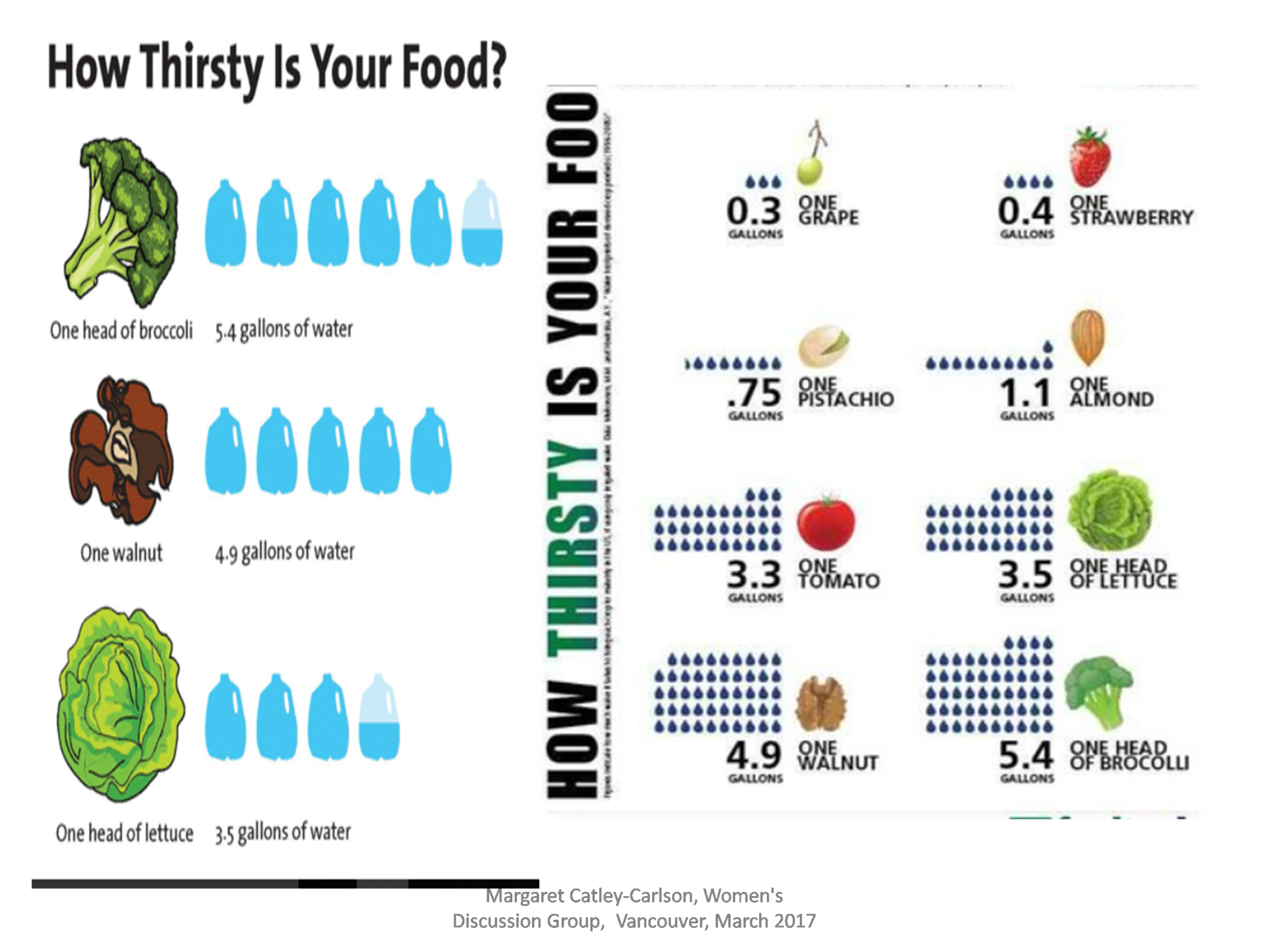Water for Food
What’s the issue?
No water, no life.
A big part of this stark reality is that all food production requires water. There are very dangerous patterns in water use for our collective food production, which takes over 2/3 of the water humans use: energy, industries and municipalities take most of the rest.
 It takes over four cups of water, more than ¼ gallon, to make a calorie. So if you eat 2500 calories a day, you’re ‘eating’ over 600 gallons of water a day, every day of every year. Global population has grown and grown. Countries have become more prosperous and demand protein and improved diets. The ‘water bill’ has skyrocketed. When the economy grows in meat-eating China, the accompanying water bill is greatly different than in more vegetarian India. A pound of meat can take as much as nine times the water required to produce a pound of grain.
It takes over four cups of water, more than ¼ gallon, to make a calorie. So if you eat 2500 calories a day, you’re ‘eating’ over 600 gallons of water a day, every day of every year. Global population has grown and grown. Countries have become more prosperous and demand protein and improved diets. The ‘water bill’ has skyrocketed. When the economy grows in meat-eating China, the accompanying water bill is greatly different than in more vegetarian India. A pound of meat can take as much as nine times the water required to produce a pound of grain.
So what’s the problem with this?
The amount of water in the world is constant – same now as for the dinosaurs. But our use patterns – and climate variability- make a great different to where this water will be and therefore who will have easy access to it. If all of the upstream water is taken out of a river for irrigation and other uses, there won’t be water in the delta. More than 70 major rivers now no longer reach the sea or ocean at some point in the year. Imagine the environmental impact this has on fish, farming and soil (sea water creeps in with no downstream pressure). Huge amounts of water for food comes from groundwater, great reserves that constitute 95 percent of the unfrozen freshwater on earth. Around the world we are pumping up vast amounts of this vital stock which took hundreds if not thousands of years to accumulate – and which in too many places we are depleting fast. A very large part of the global food supply is produced with unsustainable water sources; when they are gone, they won’t be there to grow food.
Are there solutions?
There are adaptations, changes, technological advances and adjustments being researched, sold and disseminated. If used, these can help us move forward in this untenable situation. Improved water-sparing irrigation techniques, changes in cropping methods, new seeds that resist drought or floods (the other side of droughts), better weather forecasting and treated water used for many purposes after each use – all of these can play important roles.
The really bad news is that the most significant changes have to take place in areas where resistance to policy change will make the necessary moves very difficult, if not impossible. The list includes growing crops where they require the importation of water (as opposed to where there is heavy rainfall), changing diets everywhere toward less water-intensive food, reforming irrigation licensing policy and permits to reflect real water availability and ceasing to ignore the imperative to leave water for the environment which provides the capital assets for food production. Then there’s also looking at how trading patterns in agricultural goods optimize rainfall, moving away from free water and free pumping electricity, monitoring and publicizing water use quantity and quality and cutting back on food wastage; if we waste 40 percent of all food produced, we could cut back on the agricultural water bill by up to 40 percent.
What can you do?
The above listing of most significant changes do not require deep public expertise – they require awareness, commitment and willingness to support positive change - and will. It is not an exaggeration to say that our futures depend on it.


